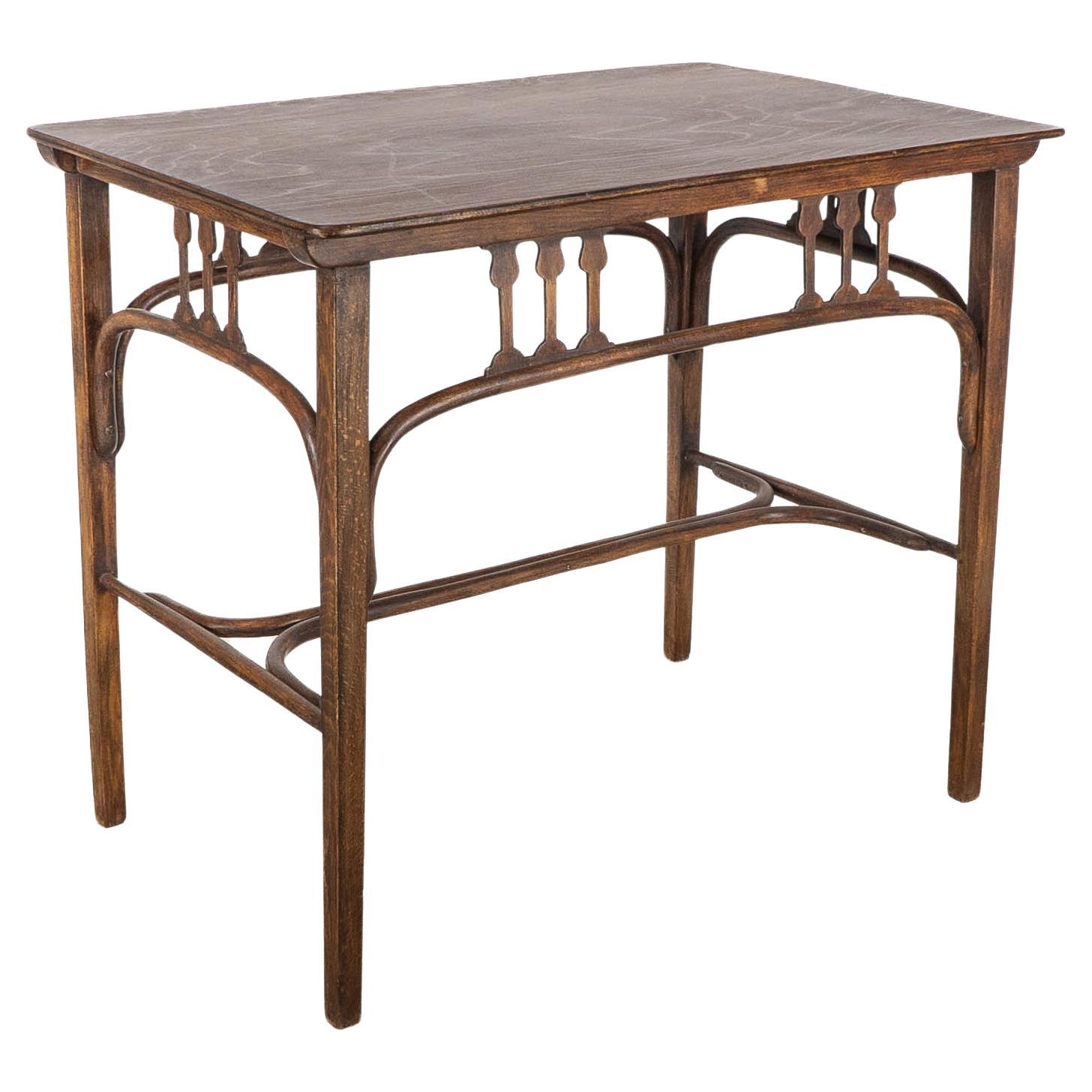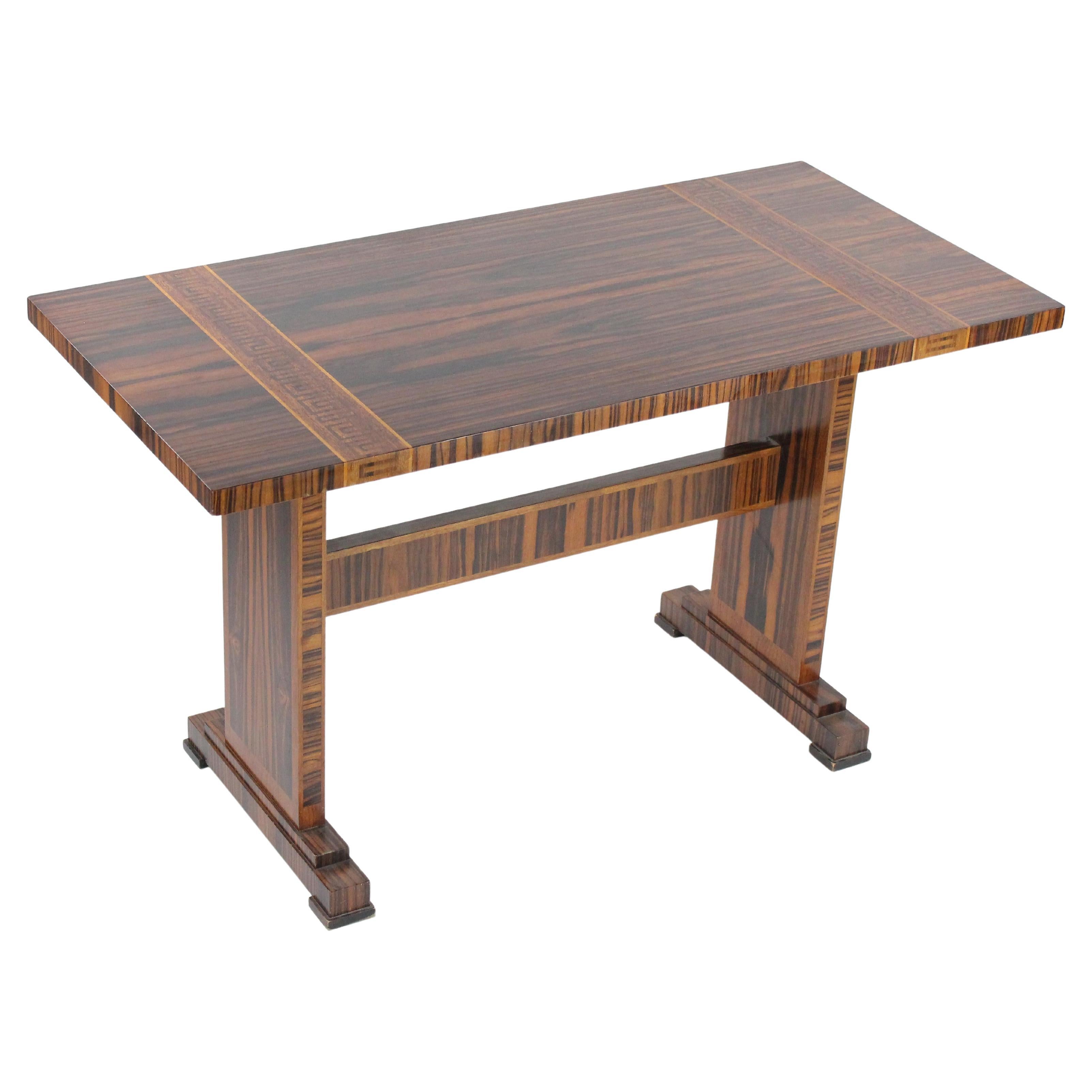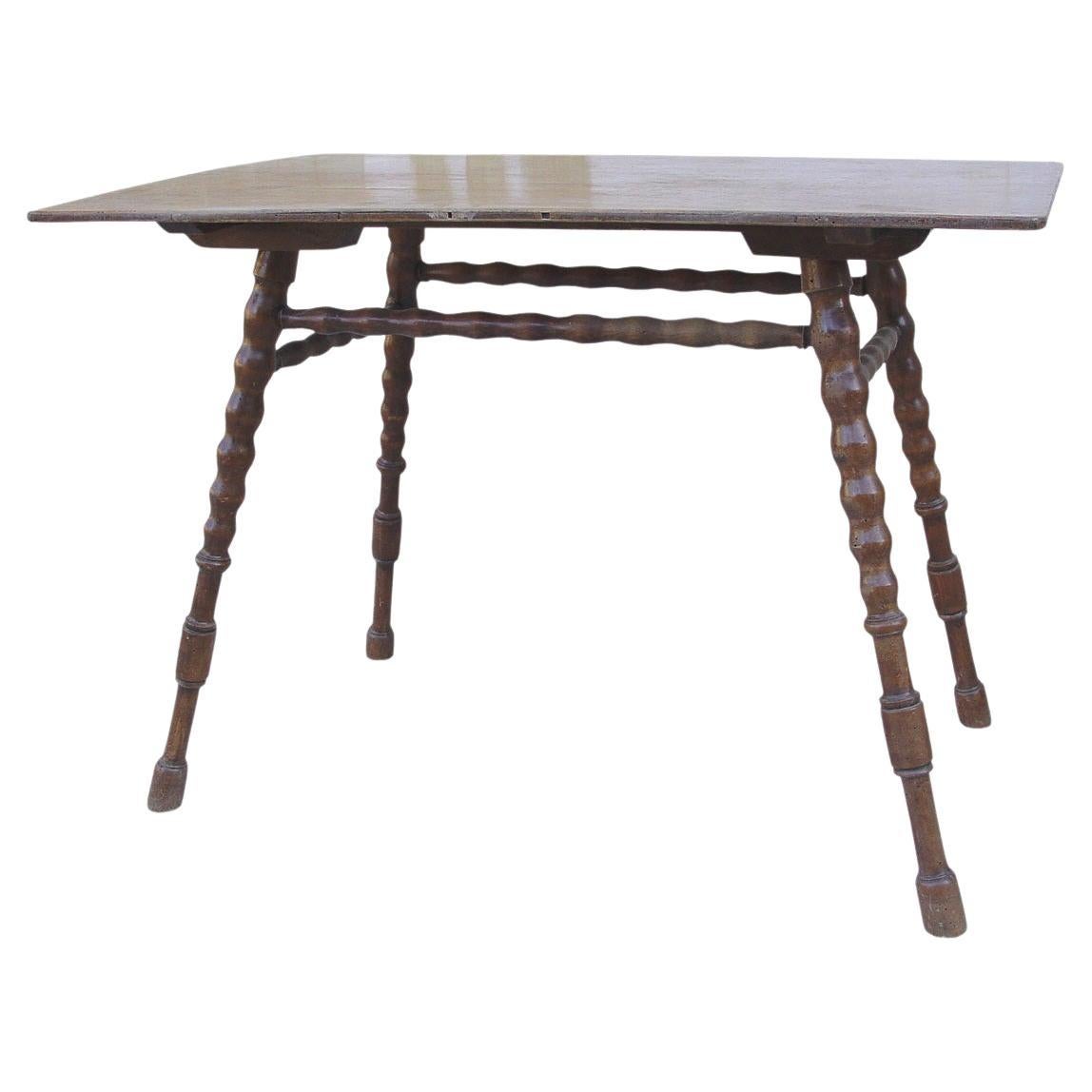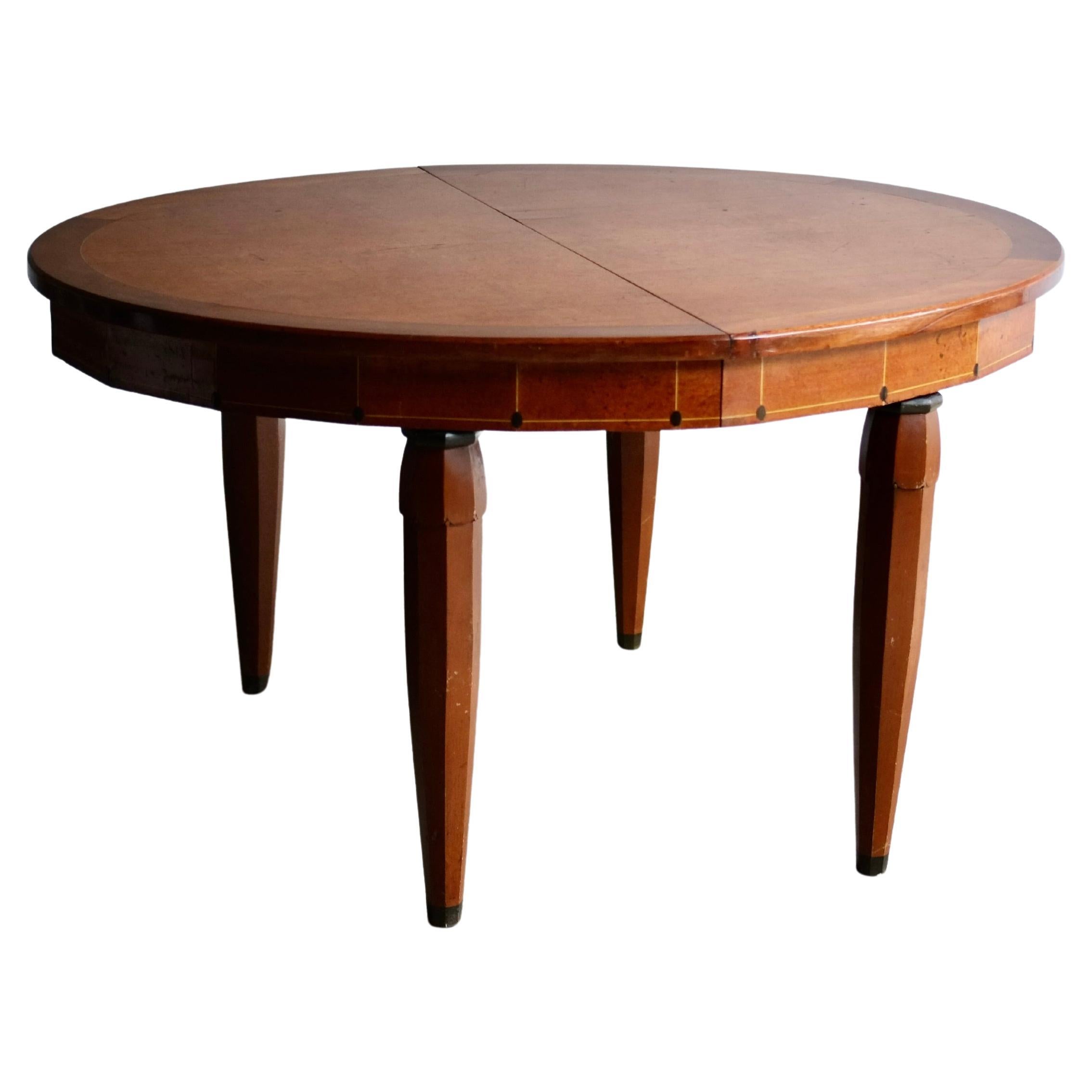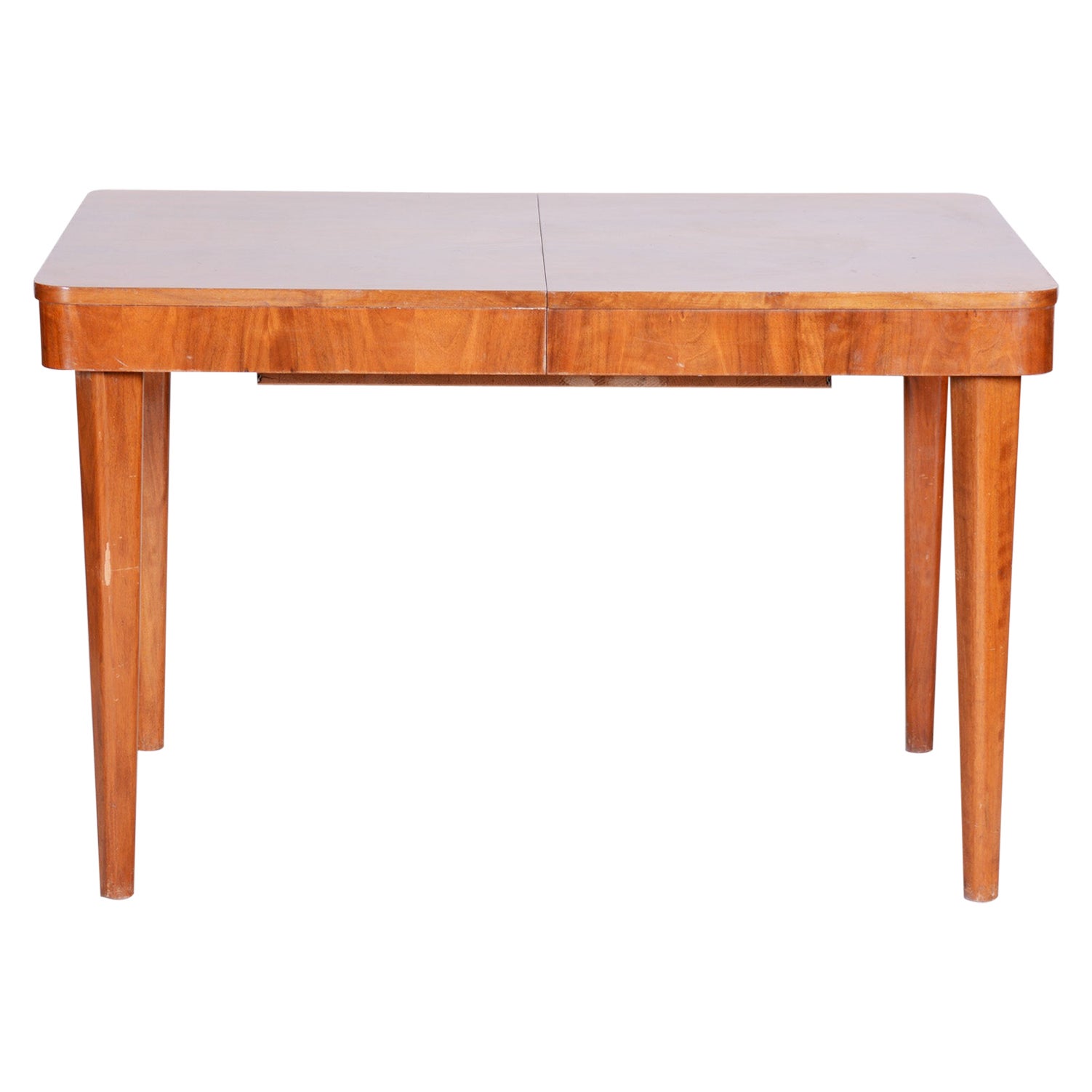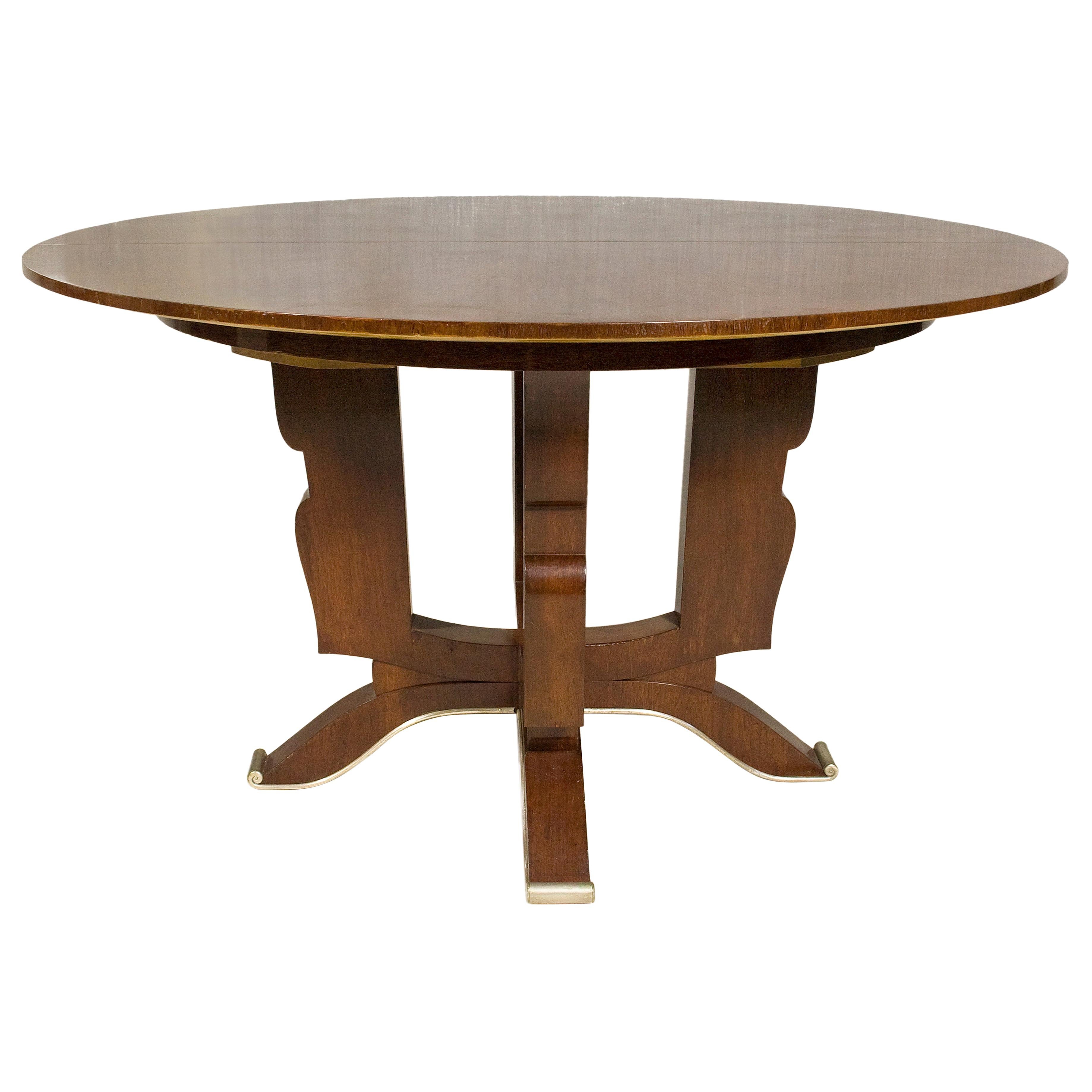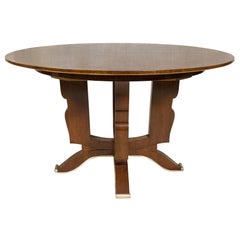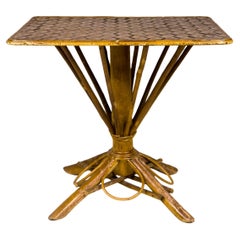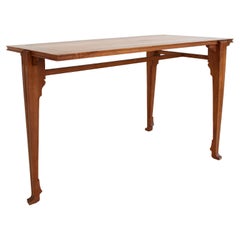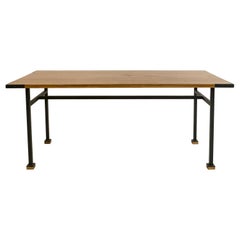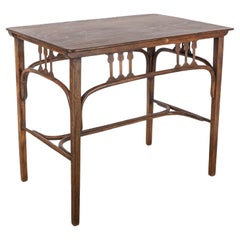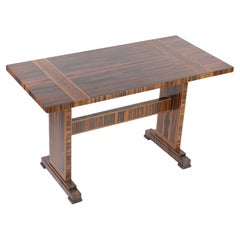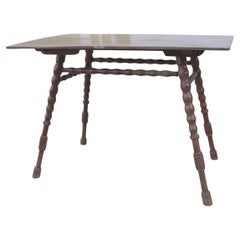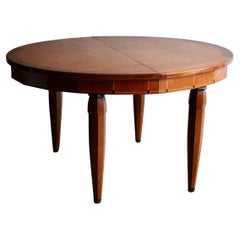Items Similar to Rudolf Lorenz Center Table for Lorenz Mobel, Circa 1920, Austria
Want more images or videos?
Request additional images or videos from the seller
1 of 9
Rudolf Lorenz Center Table for Lorenz Mobel, Circa 1920, Austria
$6,500
£5,060.69
€5,755.46
CA$9,351.95
A$10,272.70
CHF 5,368.58
MX$122,510.47
NOK 67,980.71
SEK 63,329.76
DKK 43,007.48
About the Item
DESCRIPTION: Rudolf Lorenz Center Table for Lorenz Mobel, Circa 1920, Austria
Vienna Secession Center Table by Rudolf Lorenz for Lorenz Mobel.
Ebonized wooden table with nickel-plated brass details and a four-sided frieze.
CONDITION: Good condition. Wear consistent with age and use.
DIMENSIONS: Height: 78cm (31in) Width: 119.5cm (47in) Depth: 84cm (33in)
ABOUT THE DESIGNER: Rudolf Lorenz was a Austrian furniture designer and active member of the Austrian "Vienne Secession" Movement. In 1919 Lorenz, with Samuel Goldfarb and Oskar Reiche created the "Lorenz Model" furniture company. This company remained active until 1938 when it was irradiated by the Austrian Nazi Group.
ABOUT THE STYLE: “To every age its art, to every art its freedom.”
The quote above is written above the door of the Secession Building, designed by Joseph Olbrich in Vienna in 1897. The building, purpose-built to hold exhibitions of the ‘new arts’ of modernity, was designed as a sort of visual manifesto of the Secession artists. It was a symbol of modern ideas, aesthetic principles and creativity.
A group of artists had made a decisive break from the traditional fine arts and its institutions in Vienna. The two most dominant of which were the Akademie de bildende Kunste (the Academy of Fine Arts) and the Kunstlerhaus Genessenschaft – a private exhibiting society founded in 1861. Similarly to London, Paris, Rome and other artistic centres in Europe, the artistic world had become restrictive and continued to favour the academic painting and naturalism of the past. In consequence, new arts were often rejected by the exhibitors in favour of the old. The Secession Movement aimed to provide a space and forum for modern arts, and was hugely influential in its fleeting moment of impact.
Possibly the most interesting characteristic of the Vienna Secession, as an artistic movement, was that it had no uniform artistic or aesthetic style. It was a cross pollination of ideas and its members sought inspiration from a multitude of sources, such as: the Arts and Crafts Movement of William Morris, folk art of the Austro-Hungarian Empire, Japanese art, Impressionism, the Glasgow School (particularly Charles Renee Mackintosh), the French and Belgian Art Nouveau, and Byzantium. Additionally, some of the artists went on to be associated with developing movements such as Modernism and Expressionism.
The Secessionists believed in the equality of all forms of arts and crafts and sought to unite both in the Gesamtkunstwerk – total work of art. They rejected the increased industrialisation of the nineteenth century, and promoted a return to craftsmanship and handwork.
- Creator:Rudolf Lorenz Gmbh Vienna (Designer)
- Dimensions:Height: 31 in (78.74 cm)Width: 47 in (119.38 cm)Depth: 33 in (83.82 cm)
- Style:Vienna Secession (Of the Period)
- Materials and Techniques:Wood,Ebonized
- Place of Origin:
- Period:
- Date of Manufacture:1928
- Condition:Wear consistent with age and use. Good Vintage Condition.
- Seller Location:Girona, ES
- Reference Number:1stDibs: LU952641886752
About the Seller
5.0
Vetted Professional Seller
Every seller passes strict standards for authenticity and reliability
Established in 1988
1stDibs seller since 2012
220 sales on 1stDibs
Typical response time: 1 to 2 days
Associations
20th Century Specialists
- ShippingRetrieving quote...Shipping from: Girona, Spain
- Return Policy
More From This Seller
View AllJules Leleu Gueridon, circa 1930, France
By Jules Leleu
Located in Girona, Spain
Jules Leleu Gueridon,
Made with mahogany and plated brass,
circa 1930, France.
Classic Art Deco design
Sunburst table top
4 Art Deco designed Legs positioned on a pedestal base with bronze details
Signed
Good vintage condition.
Jules Leleu (June 17, 1883–1961) was a French furniture designer.
Born in Boulogne-sur-Mer, France, Leleu studied decorative painting and at the age of 26 succeeded his father in the family painting business. With his brother he began work in the Decorating field. After World War I, Leleu specialized in furniture making. He opened a Paris gallery, Maison Leleu, in 1924 and exhibited at the 1925 Exposition Industrielle et Arts Decoratifs, winning a grand prize at the exposition. Leleu designed the Grand Salon of the Ambassadors at the Society of Nations in Geneva and the French Embassies of several nations as well as the ocean liners SS Ile de France...
Category
Mid-20th Century French Art Deco Gueridon
Materials
Brass
Indiana Hickory Table, Circa 1920, USA
Located in Girona, Spain
DESCRIPTION: Indiana Hickory Table, Circa 1920, USA
Woven Hickory Table Top on central wooden base with decorative details.
Unique piece.
CONDITION: Good condition. Wear consistent w...
Category
Early 20th Century American American Craftsman Side Tables
Materials
Hickory
Console Table in the Style of Emmanuel Pontremoli "Kerylos", circa 1970, France
Located in Girona, Spain
Console table in the style of Emmanuel Pontremoli "Kerylos".
Tripod console table.
Greek model.
Beech wood
Circa 1970, France.
Very good vinta...
Category
Mid-20th Century French Mid-Century Modern Console Tables
Materials
Wood, Beech
Table by Elisabeth Garouste and Mattia Bonetti, circa 1980, France
By Elizabeth Garouste and Mattia Bonetti
Located in Girona, Spain
Table or console by Elisabeth Garouste and Mattia Bonetti.
Very decorative.
Unique piece.designed for an appartment in Paris.
Circa 1949, France.
Very good vintage condition.
Elizabe...
Category
Late 20th Century French Mid-Century Modern Tables
Materials
Iron
Art Deco Jean-Charles Moreux Coffee Table, circa 1940, France
By Jean-Charles Moreux
Located in Girona, Spain
DESCRIPTION: Art deco coffee table by Jean-Charles Moreux made with oak and opaline glass.
CONDITION: Very good vintage condition. Wear consistent with age and use.
DIMENSIONS: He...
Category
Mid-20th Century French Art Deco Coffee and Cocktail Tables
Materials
Opaline Glass, Oak
Dining Table, 19th Century, France
Located in Girona, Spain
Dining Table.
Made with elm and marble top in eight pieces.
Marble: Carrare blanc viené.
Very decorative.
19th Century, France.
Very good vintage condition.
Known as the “Citizen Kin...
Category
Antique Early 19th Century French Louis Philippe Dining Room Tables
Materials
Marble
You May Also Like
Gustav Siegel, for Jacob & Josef Kohn, a Vienna Secessionist Bentwood Table
By J.&J. Khon 1, Gustav Siegel
Located in London, GB
Gustav Siegel made by Jacob & Josef Kohn. A Vienna Secessionist bentwood side or centre table.
Original paper label to the underside.
Jacob & Josef Kohn, also known as J. & J. Kohn...
Category
Vintage 1910s Austrian Vienna Secession Side Tables
Materials
Bentwood
Swedish Grace Art Deco Table, Sweden Late 1920s
Located in Skanninge, SE
Amazing Art Deco table made in Sweden during the so-called Swedish Grace 1920s period.
Most likely by Carl Malmsten.
Great quality and in a fine vintage condition.
Freestanding, ...
Category
Vintage 1920s Swedish Art Deco Side Tables
Materials
Birch, Mahogany, Zebra Wood
Jacob Josef Kohn Vienna Secessione Viennese Years '800/ '900
By Jacob & Josef Kohn
Located in Biella, IT
Jacob Josef kohn Vienna Austria secessione Viennese end '800 first '900 fire signed in good vintage condition.
Jacob & Josef Kohn, also known as J. & J. Koh...
Category
Antique 1890s Austrian Vienna Secession Tables
Materials
Wood
Adolphe Chanaux & Gilbert Pelletier Art Deco Dining Table, Circa 1930
By Adolphe Chanaux & Co.
Located in London, GB
Art Deco dining table by French designers Adolphe Chanaux (1887-1965) & Gilbert Pelletier. Chanaux is famed for his association with Jean-Michel Frank with whom he worked with from...
Category
Early 20th Century Art Deco Dining Room Tables
Materials
Wood
Dining Table, Designed by Jindrich Halabala, 1940s, Made by Up Závody
By Up Závody, Jindřich Halabala
Located in Brandys nad Labem, Středočeský kraj
Art Deco table.
Original condition
Surface made by piano lacquers to the high gloss.
Category
Vintage 1940s Czech Art Deco Dining Room Tables
Materials
Lacquer, Beech, Walnut
Large secession dining table by Karoly Lingel Budapest
By Lingel Workshop
Located in Banská Štiavnica, SK
Large secession dining table by Karoly Lingel Budapest with copper leg endings for 16 people. Professionally stained and repolished. Originally, the table was designed for a tailor's...
Category
Vintage 1910s Hungarian Vienna Secession Dining Room Tables
Materials
Copper
More Ways To Browse
Antique Wooden Plates
Antique Victorian Dress
Black Gold Side Tables
Cable Car
Cerused Black Oak
Chinese Porcelain Paintings
Chinoiserie Green Furniture
Curved Side Table
Double Headed Eagle
French Cast Iron Marble Top
French Wrought Iron Chairs
Hand Painted Wood Tray
Italian Plastic Side Table
Ivory Inlay
Jade Disc
Japanese Scrolls
Limestone Round Table
Mid Century Narrow Side Table
